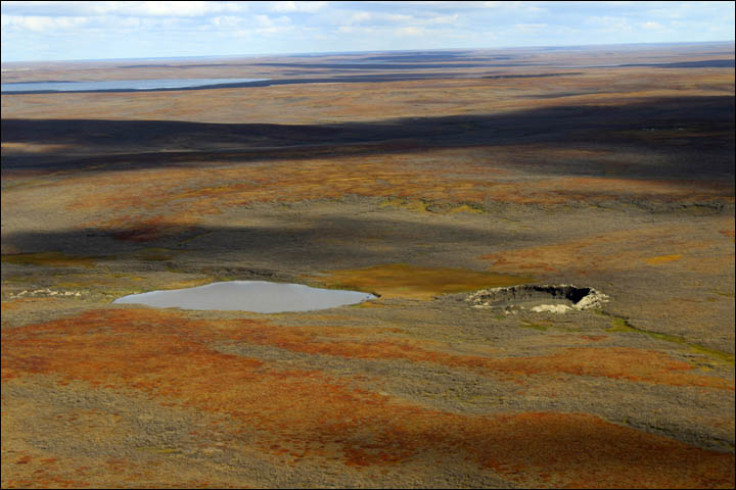Siberia's mystery 'end of the world' crater formed after massive explosion heard 100km away
The formation of a mysterious and massive crater in a remote Siberian peninsula triggered an explosion that was heard more than 100km (62 miles) away and caused the sky to glow. First discovered in 2013 by reindeer herders, its formation has become one of the biggest enigmas in the region. When it first formed, locals dubbed it the "end of the world" crater.
Although its location has been known for the last three years, details are just now emerging about what could have caused it to appear. A leading Russian scientist, Dr Vladimir Epifanov, has gathered information about dozens of new craters in the region – including this impressive one – in an attempt to understand the science behind them, and how they may evolve in the future, Siberian Times reports.
The crater is expanding
The crater formed in 2013 in the Yamal region of northern Russia – the name itself actually means "end of the world". Since then, its size has increased at least 15 times. It has gone from measuring about 4m across to more than 70m today according to the latest measurements. It may even be wider now, and has formed a lake.
The crater's depth is also impressive – the hole was estimated to be 100m deep when it was first formed. The scientists have been unable to measure its current depth, but recent estimates put the height of the northern wall from the water level at 6m, and the water depth 12m. The southern wall measures 10m in height from water level, and the water depth, 18m.

The landscape around the crater is also changing very quickly, due to melting permafrost, so experts predict the walls of the crater lake may soon collapse, leading it to merge with a nearby long-established lake.
A mysterious formation
But examining its impressive features does not solve the enigma of how the crater was formed. For the first time, local people from the permafrost Taimyr peninsula, where the craters are located, told Epifanov what they had seen.
In 2013, about a month after the Chelyabinsk meteorite, they recalled hearing an explosion. Epifanov said: "There is verbal information that residents of nearby villages − at a distance of 70-100km − heard a sound like an explosion, and one of them watched a clear glow in the sky."

Though there is not yet a definite explanation for the bright light in the sky and the loud bang, Epivanof has his own hypothesis for the cause by examining other, smaller craters. He says the trigger could have been an explosive cocktail of methane or other underground gas, which are released as temperatures rise.
In recent years, scientists have agreed that most craters in the Siberian region could have been formed by pingos − dome-shaped mounds over a core of ice that erupt under the pressure of methane gas released by the thawing of permafrost. Warming temperatures caused this thawing of the permafrost; this allowed trapped gases to escape.

It is not clear whether the same process is at work at this crater, but Epivanof wants to investigate this further. He suggests, however, that the explosion originated at such a depth that it was unlikely that rising temperatures had anything to do with it.
Instead, the degradation of gas hydrates some 500m below the surface − a normal process in a permafrost region − may have released methane that started to accumulate, eventually causing the explosion.
© Copyright IBTimes 2024. All rights reserved.






